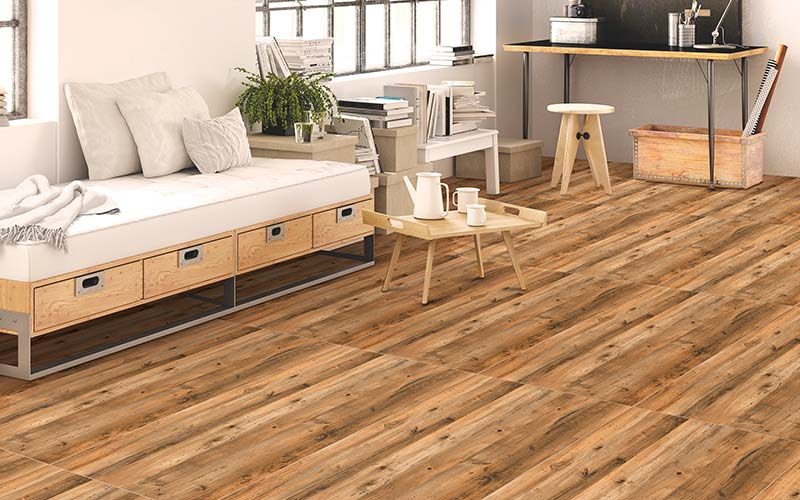Installing residential flooring yourself can be a rewarding and cost-effective way to upgrade your home. Whether you’re updating a single room or redoing your entire house, DIY flooring allows you to save money while gaining a sense of accomplishment. With the right tools, preparation, and careful planning, even beginners can successfully install durable and stylish flooring.
This comprehensive guide walks you through every step of the process, covering different flooring types, necessary tools, preparation tips, installation techniques, and maintenance advice.
1. Why Consider Installing Flooring Yourself?
DIY flooring installation comes with several advantages:
- Cost Savings: Labor costs can be significant for professional installation. Doing it yourself can save hundreds or even thousands of dollars.
- Flexibility: You can work at your own pace, making adjustments as needed.
- Satisfaction: Completing a DIY flooring project provides a sense of achievement and pride.
- Customization: Installing your own flooring allows you to experiment with layouts, patterns, and finishes to match your vision.
However, it’s important to recognize the challenges: improper installation can lead to warping, gaps, or reduced durability. That’s why preparation and attention to detail are crucial.
2. Choosing the Right Flooring for DIY Installation
Not all flooring types are suitable for DIY installation. Here’s a quick overview:
DIY-Friendly Flooring Options
- Laminate Flooring: Click-lock planks make it easy to install without adhesives.
- Luxury Vinyl Planks (LVP): Water-resistant and often features click-lock systems.
- Engineered Wood: Easier to install than solid hardwood, often with tongue-and-groove or click systems.
- Carpet Tiles: Simple to cut and fit for small spaces.
Flooring Requiring Professional Installation
- Solid Hardwood: Best installed by experts to avoid gaps or moisture damage.
- Natural Stone / Marble: Heavy and requires precise cutting and grouting.
- Traditional Ceramic Tile: Can be challenging for beginners due to precise alignment and grout work.
3. Essential Tools and Materials for DIY Flooring
Before you start, gather the necessary tools and materials to make your installation efficient and accurate:
Tools:
- Measuring tape
- Carpenter’s square
- Chalk line
- Utility knife
- Rubber mallet
- Spacers (for floating floors)
- Tapping block and pull bar
- Saw (miter saw, jigsaw, or handsaw depending on flooring type)
- Level
- Pry bar (for removing old flooring)
Materials:
- Flooring planks or tiles
- Underlayment (foam or cork for laminate, padding for vinyl)
- Adhesive or glue (if required)
- Transition strips (for doorways or room changes)
- Moisture barrier (especially for basements or areas prone to dampness)
4. Preparing Your Room for Flooring Installation
Proper preparation ensures a smooth and long-lasting installation. Follow these steps:
Step 1: Remove Old Flooring
- Pull up carpet, vinyl, or tile carefully.
- Remove old adhesives and nails.
Step 2: Inspect the Subfloor
- Check for levelness and stability.
- Repair any cracks or uneven areas.
- Ensure the subfloor is clean and dry before proceeding.
Step 3: Acclimate Your Flooring
- Allow wood, laminate, or vinyl planks to sit in the room for 48–72 hours. This prevents warping or expansion after installation.
Step 4: Gather Supplies
- Keep tools and materials organized and within reach.
- Lay down protective sheets if needed to prevent damage to walls or trim.
5. Step-by-Step Installation Guide
Step 1: Measure and Plan
- Measure the room dimensions carefully.
- Determine the direction of the planks or tiles—typically, planks run parallel to the longest wall or main light source.
- Plan the layout to minimize narrow cuts along walls.
Step 2: Install Underlayment
- Roll out foam or cork underlayment for laminate or engineered wood.
- Use tape to secure seams, ensuring a smooth, continuous surface.
- Some flooring types, like vinyl, may not require underlayment.
Step 3: Begin Laying Flooring
- Start in a corner, preferably along the longest wall.
- Place spacers between the wall and flooring to allow for expansion.
- Click or lock planks together, using a tapping block to ensure tight seams.
Step 4: Cut Planks or Tiles as Needed
- Measure and mark the last plank in each row.
- Use a saw or utility knife to cut to size.
- Ensure cuts are clean and fit snugly.
Step 5: Continue Row by Row
- Stagger seams by at least 6–12 inches for natural appearance and stability.
- Check alignment frequently using a chalk line or straightedge.
Step 6: Install Last Row and Trim
- Remove spacers.
- Use a pull bar to fit the final row snugly.
- Install baseboards or molding to cover expansion gaps.
- Add transition strips at doorways or room changes.
6. Special Considerations for Different Flooring Types
Laminate Flooring
- Floating installation is typical—planks are not glued down.
- Use tapping blocks to prevent damage when joining planks.
Vinyl Flooring
- Sheet vinyl may require adhesive.
- Luxury vinyl planks often feature click-lock systems for easier installation.
Engineered Wood
- Can be glued, nailed, or floated depending on product specifications.
- Leave expansion gaps around the room perimeter.
Carpet Tiles
- Cut to fit corners precisely.
- Press tiles firmly to ensure adhesive bonds.
7. Finishing Touches
- Install baseboards or quarter-round molding to cover expansion gaps.
- Add transition strips at thresholds between different flooring types.
- Clean the new floor with a manufacturer-recommended cleaner.
- Inspect for gaps, misaligned planks, or uneven areas and adjust as needed.
8. Maintenance Tips for DIY Flooring
Proper maintenance ensures longevity and keeps your flooring looking new:
- Laminate and Engineered Wood: Sweep regularly, avoid excessive water, and use wood-specific cleaners.
- Vinyl: Wipe spills promptly, use mild cleaners, and avoid abrasive scrubbing.
- Carpet Tiles: Vacuum frequently and deep clean periodically.
- Underlay Protection: Avoid dragging heavy furniture across the floor. Use felt pads or rugs.
9. Common DIY Flooring Mistakes to Avoid
- Skipping Underlayment: Leads to uneven surfaces or poor sound insulation.
- Ignoring Expansion Gaps: Can cause buckling in wood or laminate floors.
- Improper Measurement: Results in wasted material or narrow end planks.
- Rushing Installation: Taking your time ensures proper alignment and avoids errors.
- Using Wrong Tools: Specialized tools prevent damage and make installation easier.
10. Advantages of DIY Flooring Installation
- Cost Savings: Avoid labor fees while still achieving professional-looking results.
- Control Over Quality: You ensure every plank or tile is installed correctly.
- Customization: Adjust layouts and patterns to fit your home’s style.
- Satisfaction: Completing a flooring project yourself is rewarding and enhances homeownership pride.
11. Final Thoughts
Installing residential flooring yourself may seem daunting at first, but with careful planning, preparation, and attention to detail, it’s a highly achievable project. By choosing the right flooring type, gathering the proper tools, following step-by-step instructions, and adhering to maintenance best practices, you can transform your home with durable and stylish flooring.
DIY flooring installation not only saves money but also allows you to personalize your space and gain a sense of accomplishment. Whether it’s laminate, luxury vinyl, engineered wood, or carpet tiles, your new flooring will elevate the comfort, beauty, and value of your home for years to come.


